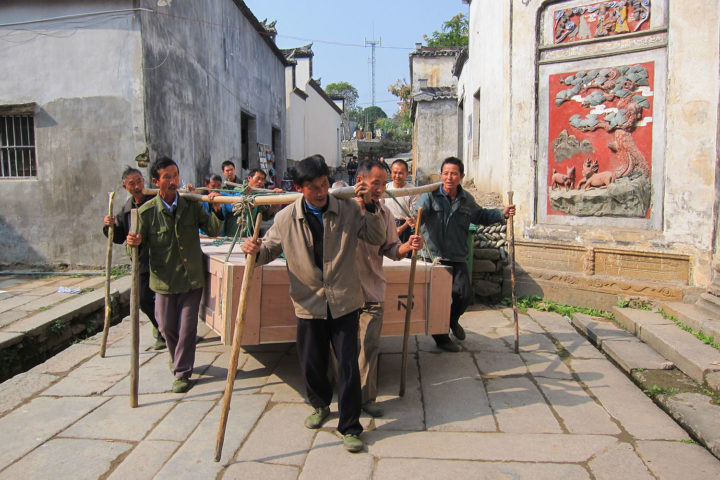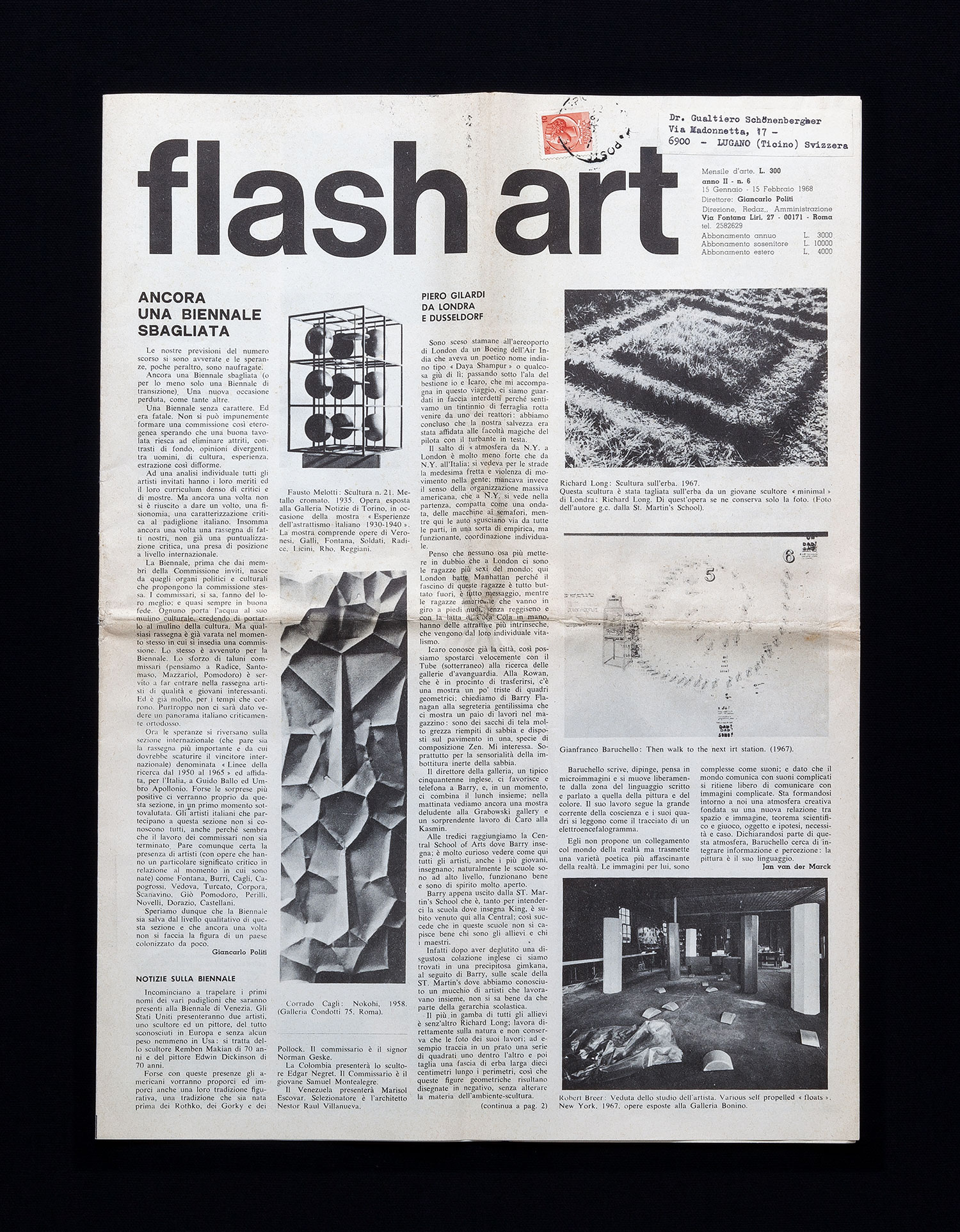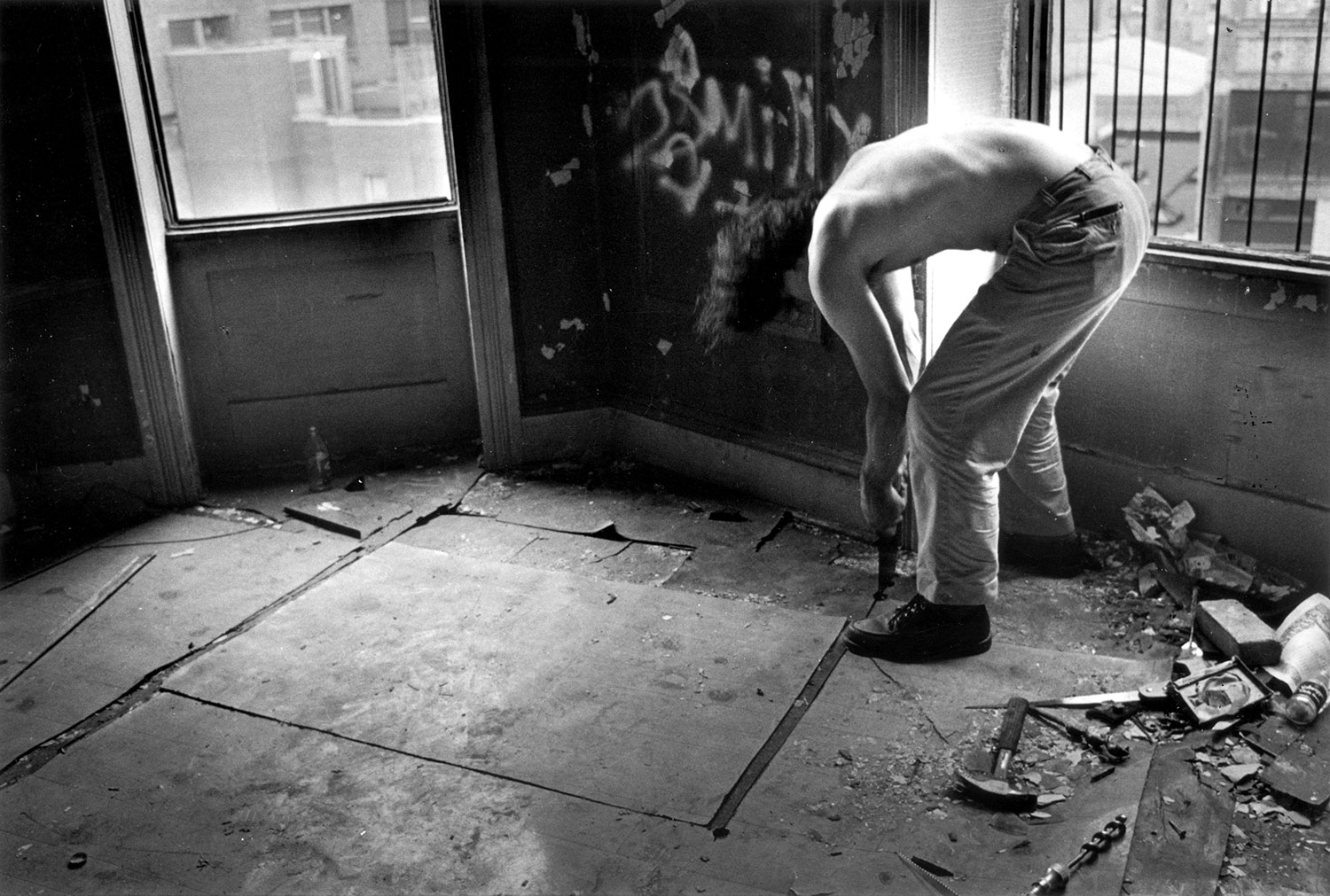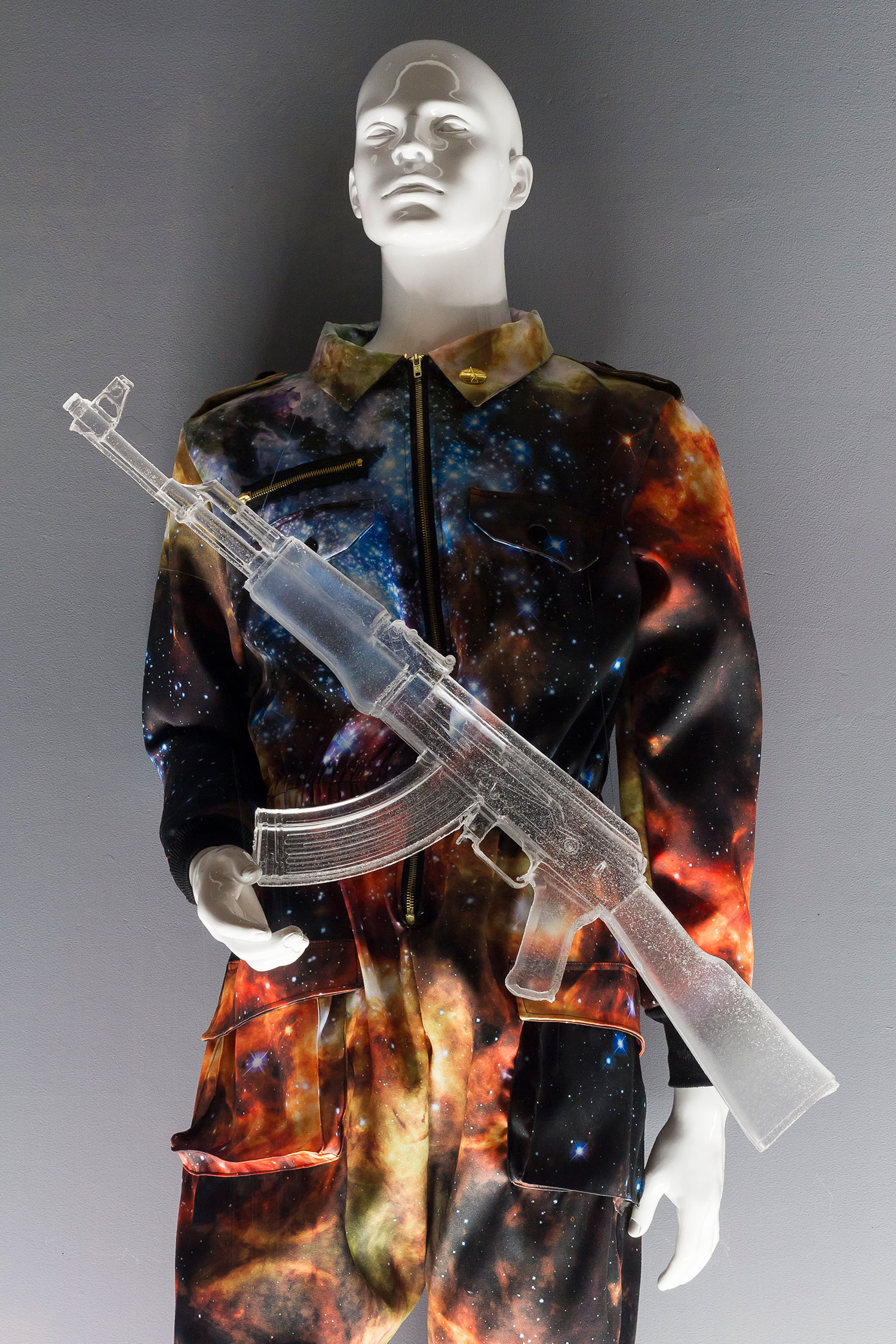
“Ambivalent Witnesses,” Hou Hanru’s survey of Chinese contemporary art published in Flash Art in 1996, was among the first attempts at framing this burgeoning scene. Twenty years after that publication, with China now a fully active participant in the globalized world, Weng Xiaoyu sifts through the dilemmas that still haunt the identity of Chinese art.
Almost ten years ago, the third Guangzhou Triennial took on a challenging task by proposing “Farewell to Post-Colonialism” as a thesis for examination. The proposition was controversial but inevitably intriguing. The three curators of the show, Sarat Maharaj, Gao Shiming and Johnson Chang Tsong-zung, acknowledged the role of postcolonialist discourse in “deconstructing Eurocentric ideas of art and culture,” but questioned its emphasis on multiculturalism as a means to systematize difference, reducing issues of identity, locality and diversity into routine artistic themes and politically correct curatorial gestures.[i] The exhibition received harsh criticism, as its scheme was indeed problematic on many levels. Leaving aside the exhibition’s reading that equated “postcolonialism” with “multiculturalism,” the struggle and aftermath of colonialism was not an intellectual fantasy but a series of real-life events. The manifesto-like title shows a naïveté in curatorial judgment by making an overly broad statement and a promise that no exhibition could possibly fulfill. However, certain aspects of their curatorial thinking — especially the caution against a rapidly homogenizing global art and culture sphere and the tendency to apply political correctness as a strategy for exhibition making — are worthy of further discussion.
It is also important to recognize that the mire in which the third Guangzhou Triennial found itself reflects a dilemma within contemporary Chinese art more generally: while swiftly assimilating the international art community and exhibition scene, it was simultaneously experiencing an existential crisis. “Farewell to Post-Colonialism” was an attempt, albeit ineffective and derailed, through a global platform (e.g., an international triennial), to generate a new theoretical framework and vocabulary for art from China and to reposition it in relation to mainstream discourses that are born out of European traditions.
As a full participant in this globalized world, China is now entangled in a constant process of renegotiating its physical territory, cultural traditions and identity as a nation. We see each of these aspects enduring perpetual dissolution and anxious reinstatement — a version of what the French theorists Gilles Deleuze and Félix Guattari have described as “deterritorialization” and “reterritorialization.”[ii] Under the force of globalization, as national and cultural principles and traditions are blurred, borders disappear and barriers to trade are erased. Language and even biology, through genetic engineering for example, become more homogenous; art is also unable to escape, becoming a standard product to be shaped and consumed by large-scale exhibitions and global markets.

To resist is not an easy task. While turning to traditions and ancient knowledge is a predictable step, it sets the trap of falling into the pitfall of nationalism. Thus ensnared was the Chinese Pavilion at the last Venice Biennale, with its attempt at sewing together a national-cultural Chinese character. Titled “Continuum – Generation by Generation,” the exhibition displayed Song Dynasty paintings, folk crafts like embroidery and shadow puppets, archival materials, as well as newly commissioned collaborative works by folk and contemporary artists as contextualized by two Chinese fables: “The Foolish Old Man Removes the Mountains” and “Jingwei Filling the Sea.” Furthermore, the imagery of “mountain and sea” represented in these two fables evoked the dichotomous ideas of “ancient and new” and “yin and yang.” By doing so, the exhibition was able to infuse new vitality into today’s artmaking through ancient texts and traditional artisanship, therefore embodying the concept of bu xi — the Chinese title of the show (literally translated as “ceaselessly” or “unrelentingly”) — a demonstration of Chinese artistic practice as a continuous, five-thousand-year-long project.[iii] However, the exhibition was not able to convince its audience of the grand vision and historical richness it outlined. While the shadow play was mesmerizing and the embroidery was outlandish, all seemed out of context. It was unclear how these objects represented a renewal of art and spirit — except for the superficial employment of a mechanically automated shadow-puppet “performer” or advanced paper-cutting technique in collage. It all felt too much like a return to the self-exoticizing ethnographic display of a trade show, an image of contemporary Chinese art many artists have fought to unsettle in one way or another over the past decades.
“Continuum – Generation by Generation” suffered from the presumptuous curatorial premise of condensing a vast claim into a series of mechanical juxtapositions of historical literature, classical artworks, craft techniques and contemporary forms of expression. It was also incapable of contextualizing a meta-narrative of the traditional modes of knowledge production, which resulted in separating the head from the body on at least two counts: its complex local ecology and its international biennial audience. Some read the exhibition as a direct translation of government policy into an exhibition that only served Chinese politics and soft power.[iv] Although it had demeaned art and craftsmanship to the status of “evidence” for foisting nationalistic values, the exhibition did point to the intellectual dilemma associated with traditional identity and historical consciousness, a repetitive focal point in the tension between the irresistible force of globalization and a growing awareness of an alternative locality.
Although radically different in nature, the Bishan project, initiated by Ou Ning in collaboration with Zuo Jing, can perhaps serve as a counterexample — an effort to contest homogenizing coercion by self-consciously appropriating it, digesting it and perhaps transforming it. Founded in 2011 against the backdrop of a drastically decreasing rural population, disappearing traditions and environmental degradation, the project formed a community in a historical building compound in Bishan, a village in the Huizhou region, composed of living spaces, event spaces, schools, bookstores, a cinema, etc. By actively engaging local villagers through organized cultural festivals, such as musical performances, poetry readings and art and craft workshops, the Bishan project intended to experiment with alternative models for sustaining and preserving traditional art and historical architectures, unlike those that have already been turned into tourist sites managed by government-owned companies. For example, the project invited international artists and designers to work with local craftsmen to create new products using their traditional techniques. An online store was also set up to help sell locally grown produce, and there were plans to start organic farming.[v] From an urban middle-class perspective, the Bishan project was sometimes criticized as another form of gentrification with “a romantic conception of the countryside.”[vi] But Ou Ning and Zuo Jing’s ambition did not stop there. At one point they hoped to evolve the Bishan project into a new form of utopia, as they renamed the community “Bishan Commune” and visited and researched a number of “practical utopias” in Europe, New Zealand and Australia. Ou Ning also published his notebook as an artist’s book called Bishan Commune – How to Start Your Own Utopia (Aarhus: Antipyrine, 2015). This included his thoughts and accounts of activities in Bishan, as well as an interview in which he reflects on ongoing anarchist practices in a totalitarian, capitalist reality. But this vision would soon vanish, when local authorities closed down the place and evacuated Ou Ning, Zuo Jing and other members of the commune in 2016.

The Bishan project, though short-lived, sheds light on the possibility of reinventing the local by overcoming the local, and it further encourages a reconnection with tradition as a kind of internalized and localized effort instead of an externalized, symbolized and grandiose showcase in international arenas. The booming private museum scene in Chinese cities might also exercise such an inward-facing practice, not as a default to some kind of “conservative revolution” or rejection of international art and thinking, but to incorporate local and historical contexts into their programming and collections. In doing so, we might be able to free ourselves from the vicious cycle of writing one grand narrative after another as a means of framing so-called Chinese contemporary art.
The disbanding of the Bishan project was not a voluntary choice, but it could serve as a metaphor for departure, disappearance or termination as forms of resistance against self-institutionalization. In 1996, unwilling to produce work that necessarily would be mediated by the market or by curatorial agendas, Qian Weikang of the New Measurement Group left the art world. A year prior to that, the Group dispersed and shortly thereafter destroyed all records of their collective works in response to the threat of their practice being mainstreamed. Ultimately, in 2009, another member, Gu Dexin, also stopped producing art as a total denunciation of the fully neoliberalized art market in China. If the imperative of art is to reimagine the whole of life — believing such imagination can free us from the general drift of the world — and ultimately redirect it, then such beliefs become even more urgent today. Art always situates itself as a social antithesis, and such a position compels it toward a rich and productive unreasonableness while in solitude. The untenablity is the implication of artistic exits as such.
If the discourse “Chinese contemporary art” is already mainstreamed, then perhaps the dissolution of this concept will mark the beginning of a different kind of contribution to global art and intellectual discourse from the art communities of China. We are not there yet, but we can aspire to it.





